BIGEC 2022
SAGE/ESSL BIGEC 2022 Technical Program
WELCOME AND INTRODUCTIONS
SAGE/ESSL Benghazi International Geoscience and Engineering Conference (SAGE/ESSL BIGEC 2022), 30 Aug.–01 Sept. 2022, Benghazi, Libya, and Online
Salah S. El-Ekhfifi (SAGE/ESSL BIGEC 2022 General Chair), Mohamed Shelmani (SAGE/ESSL BIGEC 2022 Vice Co-Chair), James J. Willis (SAGE/ESSL BIGEC 2022 Vice Co-Chair), and Aimen Amer (SAGE/ESSL BIGEC 2022 Technical Program Chair)

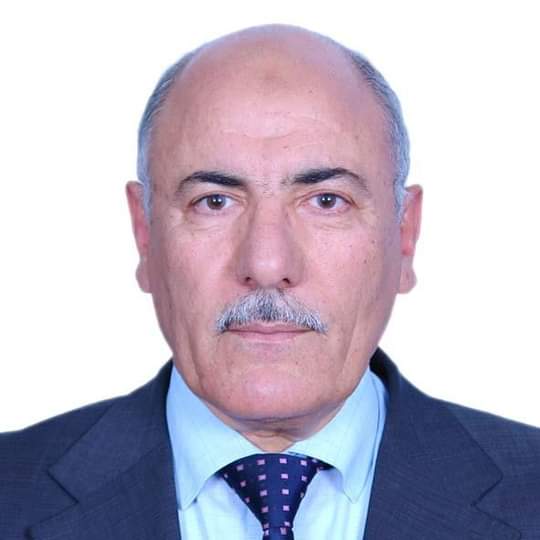


The Benghazi International Geoscience and Engineering Conference (BIGEC 2022) was jointly held by the Society of Applied Geoscientists and Engineers and the Earth Science Society of Libya, 30 Aug.–01 Sept. 2022, Benghazi, Libya, and Online. This hybrid event was hosted by the University of Benghazi. Over 30 presentations were delivered, including several keynote presentations. A successful post-convention field trip was also held.
The quote by Aimen Amer that “Benghazi is back!” serves the convention well which brought together colleagues, in some cases separated by years, in a safe, welcoming environment.
PANEL DISCUSSION: Evaluation & Monitoring the Environmental Impact along the Mediterranean Sea
11:00 am–12:30 pm, 01 September
Join us for a focused panel discussion on environmental aspects along the shoreline of the Mediterranean Sea, including oil spills, micro-plastics, chemical pollutants, sewage, surface and groundwater contamination, bio-monitoring, and more! More details coming soon!
Moderator:
Dr. Faraj Elmabrouk, Department of Environmental and Public Health Engineering, University of Benghazi
Co-Moderator:
Dr. Nuri Fello, Geoscience Department, Nafusah Oil Operations
Current Panelists:
Dr. Younes Ben Amer, Dean, Faculty of Science, University of Benghazi
Dr. Houssein Elbaraasi, Department of Zoology, University of Benghazi
Dr. Osama Ahmed Elsalini, Department of Zoology, University of Benghazi
Prof. Salem Elshatshat, Department of Ecology, University of Benghazi
Dr. Hussein Jenjan, Department of Zoology, University of Benghazi
Dr. Osama Rahil Shaltami, Department of Earth Science, University of Benghazi
List of Keynote Presentations with Abstracts
KEYNOTE PRESENTATION: Energy Transition: Hydrogen Fuel Intrusion and CCS Role!
Hadi Belhaj (Khalifa University of Science and Technology, Abu Dhabi, United Arab Emirates)
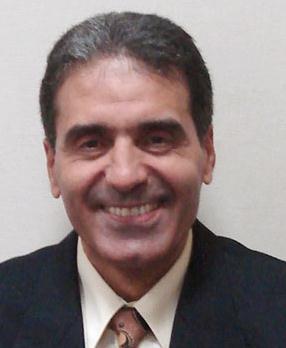
The petroleum industry has faced many challenges over the past two centuries and has survived a very bumpy road to becoming the undisputed top world energy supply. Nevertheless, hydrogen energy is speculated to take the lead in being the greenest and most affordable energy resource. In order to survive the current and future challenges, the oil industry must reform itself and go through what we call the “Energy Transition.” Hydrogen fuel cells became part of the global energy equation in recent years. As governments throughout the world strive to reduce their carbon emissions, repurpose old infrastructure, and phase out internal combustion engines, interest is only growing. According to the International Energy Association study in June 2019, clean hydrogen energy is presently seizing unprecedented political and corporate momentum, and the number of global regulations and projects in this domain is rapidly rising. What is left is developing this technology to implementation with reasonable cost. The initial interest in hydrogen as an alternative energy source came in the shadow of the oil crisis of the 1970s as the world experienced one of the most energy crunches of modern history. During the years from 2004 to 2008, 1.2 billion US dollars were spent on hydrogen technology in the US alone, with 720 million of those dollars going toward R&D. The US Department of Energy has provided this initiative with $120 million per year in previous years. Similar systems are already in place in more than 20 nations across the world. Hence, it is important to think about what’s driving the current global push for hydrogen energy and why so many people see the hydrogen economy as the realization of a long-term environmental goal. More importantly, what would be the role of the traditional petroleum industry in such hydrogen hype knowing that the most reliable source of hydrogen is fossil fuels; ex: HC gas, coal, etc.? Can fossil fuel survive the energy transition age by resourcing clean hydrogen and incorporating carbon capture and storage (CCS)? The world net zero CO2 emission is set at 2050, anyway! A thorough discussion on all these legitimate concerns shaping the future of the petroleum industry is deliberated.
BIOGRAPHY: Dr. Hadi A. Belhaj is a petroleum engineering faculty member at Khalifa University (KU), Abu Dhabi, UAE, teaching various graduate and undergraduate courses ranging from reservoir engineering to unconventional reservoir characterization and modeling to drilling engineering to petroleum economics and risk analysis to hydrogen resourcing, storage, and recovery to CCS. Dr. Belhaj has over 40 years of combined industrial and academic experience with key qualifications and research achievements in reservoir engineering, reservoir simulation, modeling fractured reservoirs, EOR, reservoir stimulation, sand production, unconventional reservoirs, and decarbonized fossil fuels. Geographically, his experience is spread over North America, Europe, North Africa, Asia, and the Middle East. Prior to KU/PI merging, Dr. Belhaj was engaged with the Petroleum Institute, Texas Tech University, and Dalhousie University, respectively. From 1982 until 2000, Dr. Belhaj worked with Schlumberger and the Libyan National Oil Corporation (LNOC), respectively. Dr. Belhaj is a Distinguished Member of the Society of Petroleum Engineers (SPE). Dr. Belhaj also is the recipient of 2013/2020 SPE Regional Distinguished Achievement for Petroleum Engineering Faculty Award and the 2019 SPE Regional Reservoir Description and Dynamics Award. He is currently a member of the Journal of Petroleum Technology Editorial Committee and SPE-ATCE Technical Program Subcommittee and has served on numerous other SPE and none SPE educational, research, and judging-related committees as well as conference/workshop/forum programming and organizing committees. Dr. Belhaj has contributed a number of consortium research proposals dealing with petroleum engineering and energy exploitation challenges generating more than 17 million dollars of research grants. Dr. Belhaj published more than 130 refereed journal and conference articles and signed a contract with Elsevier Publishing to write a series of seven-volume-book on the characterization and modeling of unconventional reservoirs, the first volume on tight oil UCRs is due by end of 2022. Dr. Belhaj is a member of other professional societies and organizations around the globe; the Society of Special Core Analysts (SCA), the International Society for Porous Media, and the OMAEASME are among them. Dr. Belhaj currently serves as the Associate Editor for both the Journal of Petroleum Exploration and Production and the Petroleum Science and Technology Journal.
KEYNOTE PRESENTATION: Decision-Making and Risk Analysis in Petroleum Exploration and Production
Said Gaci (Sonatrach–Geology, Geophysics & Reservoir Department, Algerian Petroleum Institute [IAP], Boumerdès, Algeria)

This lecture provides knowledge of the role of petroleum economics in decision making for both exploration and production asset management.
It will introduce how decisions are made in the upstream oil and gas industry. It will present an overview of the global oil and gas industry before focusing on project economics and the use of economic indicators in decision making. The impact of risk and uncertainty will then be discussed, with the introduction of tools such as decision trees and spider diagrams. Ultimately, the selection of optimal projects portfolio will be debated.
BIOGRAPHY: Dr. Said Gaci received a Diploma in Geophysical Engineering and a Magister degree in Petroleum Economics and Strategic Management from the Algerian Petroleum Institute (IAP), Boumerdès, Algeria, in 1997 and 2004, respectively, and Magister and Ph.D. degrees in Geophysics from the University of Sciences and Technology Houari Boumediene (USTHB), Algiers, Algeria, in 2002 and 2011, respectively. He worked in Sonatrach–Division Exploration as a Senior Geophysicist from 2004 to 2015. He joined IAP in 2015 as Head of the Development and Valorization Department (R&D Direction). Currently, he is the Head of Geology, Geophysics & Reservoir (GGR) Department at the IAP–Boumerdès School. His research interests include the application of signal processing and pattern recognition techniques in geosciences. He published 6 technical books in oil and gas exploration, and more than 35 papers. He also organized several national/international workshops, and conferences as convener/co-convener, and serves as editor and reviewer for several journals in the geosciences.
KEYNOTE PRESENTATION: Tectonic Evolution of the Arabian-Nubian Shield
Zakaria Hamimi (Faculty of Science, Benha University, Benha, Egypt)

Abstract forthcoming.
BIOGRAPHY: Dr. Zakaria Hamimi is a Tectonics and Structural Geologist, currently at Benha University in Egypt, and has worked previously at Sana’a University, Yemen (1995–1998) and King Abdulaziz University, Saudi Arabia (2003–2013). He obtained a BSc (distinction with Honors) in 1984 at Assiut University, an MSc in 1988 at Zagazig University, and a PhD in 1992 in Structural Geology and Tectonics at Cairo University. His research focuses on the tectonic evolution of the Arabian-Nubian Shield via structural/microstructural, paleostress. and strain studies, aligned with geological mapping, geomorphology and remote sensing methodologies. His research output exceeds 100 research publications in national and international journals and several books.
Zakaria Hamimi is the President, and a Founding Member of the Arabian Geosciences Union, since 2012. He has been awarded the medal of the Egyptian Geological Society of Egypt in 2015 and the medal of the Arab Mining and Petroleum Association in 2016. His services to the profession include his roles as Associate Editor of the Egyptian Journal of Geology (1998–2002), the Arabian Journal of Geosciences (2016–now), the Journal of African Earth Sciences (2021–now); the Egyptian Universities Promotion Committee, Supreme Council for Universities, Egypt (2016–2019); Secretary of the National Committee for Geological Sciences, Academy of Scientific Research and Technology (2016–2019), and later nominated for President of this Academic Committee in 2020; and the IUGS Representative for Egypt in Cape Town 2016 and Thailand 2017.
KEYNOTE PRESENTATION: Geoscience and its Role in the Energy Transition
Jonathan Redfern (University of Manchester, Manchester, UK)
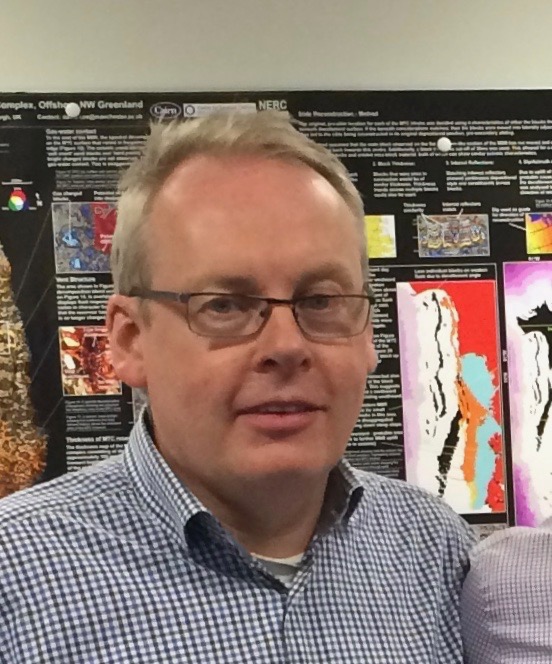
A review of the critical role geoscience plays in the Energy transition. As the world strives to cut carbon emissions, and meet Net Zero targets, what is the scale of the challenge and how will geologists be called upon to meet that challenge. From securing gas as a replacement fuel and delivering energy security to the developing world. Carbon sequestration to mitigate the impact on climate change and offer carbon neutral hydrocarbons. Critical minerals. And geologists role in future geothermal and other subsurface renewable resources.
KEYNOTE PRESENTATION: Integrating Outcrop and Subsurface Geology to Unlock the Future Resources in Libya
Jonathan Redfern (University of Manchester, Manchester, UK)

Libya has huge resource potential, for oil, gas and critical mineral resources, as well as future renewable resources and carbon sequestration. It is nearly 70 years since first oil was discovered, so what is needed to unlock remaining assets? The key is access to data, driving new research that re-appraises the old models. Integrating outcrop data with the wealth of subsurface data to build a robust framework to understand the evolution and distribution of resource plays. Adopting GIS databases and digital technology is fundamental, but we can’t get away from doing the ground work, methodical quality geology. The presentation will review existing distribution of petroleum systems across Libya, where the plays may be extended, and examples of research integrating outcrop and subsurface geology in a GIS environment to bring the rocks to the desktop…!
BIOGRAPHY: Jonathan Redfern has over 35 years of experience in industry and academia. He is the Director of the North Africa Research Group at the University of Manchester (www.narg.org.uk), where he leads a large team of PhDs, Postdocs, and Researchers who have been undertaking fieldwork/studies across North Africa for over 20 years, sponsored by leading energy companies. Jonathan obtained his BSc from Chelsea College, London University and a PhD from Bristol University. He began his career in the oil industry, working as a geologist in the North Sea for Fina UK, then ingternationally with Petrofina and Amerada Hess for 15 years. He later moved to academia to develop geoscience research and teaching programmes. His research interests include regional geology and basin analysis, fluvial and glacial sedimentology. In 2020, the Energy Transition Centre for Master Training (CMT) was initiated, a UK initiative to foster collaboration among academia, industry and government to tackle the urgent training challenge in geoscience and engineering.
KEYNOTE PRESENTATION: Paradise Machine Learning Technology—Understanding the Subsurface in Detail
Deborah Sacrey (Auburn Energy, Weimar, Texas)

Multi-attribute machine learning using self-organized mapping (SOM) (which is an unsupervised learning process) can be shown to reveal details in the data not previously identified and which can be interpreted to be lithologic in nature. The detail comes with the statistical analysis of the data based on information on each sample on each trace in the data. The result of this sample-based statistical analysis is that one can interpret thin-bed resolution well below conventional wavelet tuning. This, in turn, helps with highly accurate reservoir prediction when one ties the information to existing production or in the estimation of new reserves in exploration plays.
The key to the presentation is showing examples of problems in the every-day interpretation of data which can be solved by the neural analysis (classification) of multiple seismic attributes. These problems could be reservoir delineation, exploration and exploitation for new reserves, interpretation of complicated stratigraphic sequences, or basic interpretation when the data is less than optimal. Additionally, new deep learning algorithms allow the interpretation of faults in the data without having to manually pick fault segments. This saves an immense amount of time for the interpreter. The fault attribute volume can then be combined with other attributes in the SOM process. The result allows the interpreter to see the faulting and the stratigraphy at the same time.
This presentation will highlight the use of SOM in thin bed environments, finding carbonate porosity, and showing examples with the result of SOM coupled with the fault attribute to capture compartmentalization of reservoirs.
Ed. Note: An earlier version of this talk was presented as part of SAGE AGES #2, 30 June 2022, Lafayette, Louisiana, and online. SAGE Record 067 documents an extended abstract version with illustrative support (http://hpr.oys.temporary.site/website_846cd7f6/sage_record_067_sacrey/). The SAGE/ESSL BIGEC 2022 presentation provided additional insights into carbonate environments.
BIOGRAPHY: Deborah Sacrey is a geologist/geophysicist with 45 years of oil and gas exploration experience in the Texas and Louisiana Gulf Coast and Mid-Continent areas of the US. She received her degree in Geology from the University of Oklahoma in 1976 and immediately started working for Gulf Oil in their Oklahoma City offices.
She started her own company, Auburn Energy, in 1990 and built her first geophysical workstation using Kingdom software in 1996. She helped SMT/IHS for 18 years in developing and testing the Kingdom Software. She specializes in 2D and 3D interpretation for clients in the US and internationally. For the past ten years, she has been part of a team to study and bring the power of multi-attribute neural analysis of seismic data to the geoscience public, guided by Dr. Tom Smith, founder of SMT. She has become an expert in the use of Paradise software and has over 5 discoveries for clients using multi-attribute neural analysis.
Deborah has been very active in the geological community. She is Past National President of SIPES (Society of Independent Professional Earth Scientists), Past President of the Division of Professional Affairs of AAPG (American Association of Petroleum Geologists), Past Treasurer of AAPG, and Past President of the Houston Geological Society. She is Past President of the Gulf Coast Association of Geological Societies and is a past member of the GCAGS representation on the AAPG Advisory Council. Deborah is also a DPA Certified Petroleum Geologist #4014 and DPA Certified Petroleum Geophysicist #2. She belongs to AAPG, SIPES, Houston Geological Society, South Texas Geological Society, and the Oklahoma City Geological Society (OCGS).
KEYNOTE PRESENTATION: History of Petroleum Exploration in Libya
Mohamed Shelmani (Benghazi Branch of the Earth Science Society of Libya, Benghazi, Libya)

No abstract available as of press date.
BIOGRAPHY:
1975 BSc in Geology, University Of Tripoli, Libya
1975–1978 Concession Geologist (AGOCO) Benghazi
1978–1982 Head of Geological Lab and Special Projects (AGOCO)
1982–1983 Special Project (Imperial College London)
1980 Study (USA)
1983–1996 Concessions, Regional and Well Site Coordinator (AGOCO)
1996–2004 Geological Advisor (Algerian Libyan Oil Co.) Algeria
2004–2006 Senior Geological Advisor (AGOCO)
2006–2007 Senior Geological Advisor (BP) London
2007–2009 Senior Staff Geological Advisor (AGOCO)
2009–2014 Nalco Libya Branch Manager Tripoli
2014–2016 Nalco Libya Branch Advisor
2016–2018 NOC Exploration Advisor Benghazi
2018–Present Retired
KEYNOTE PRESENTATION: Insight on the Tight Gas Potential in North Africa: Tunisian Case Study
Habib Troudi (Entreprise Tunisienne d'Activités Pétrolières [ETAP], Tunis, Tunisia)

Abstract forthcoming.
BIOGRAPHY: Dr. Habib Troudi is the Exploration Studies & Promotion Department Manager at ETAP. He is a senior expert geoscientist with up to 30 years of demonstrated experience in oil and gas upstream industry. He is skilled in petroleum exploration and business development with a Doctor of Philosophy (Ph.D.) focused in petroleum geology from Tunisia University. Dr. Troudi has held several management positions at national and international oil companies such as ETAP NOC Tunisia, OMV Tunisia, Pioneer Natural Resources (USA–Dallas), Petrocanada (Calgary), and Numhyd Arl (Algeria); the latest two positions were Exploration Geoscience Team Leader with OMV and Exploration Advisor with ETAP NOC Tunisia. He has worked with international experts of many new venture projects to evaluate new exploration and near field opportunities in Middle-East and North Africa basins. He is the author and co-author of more than 50 papers dealing with all exploration topics including carbonate and clastic reservoirs, tight gas, and unconventional plays, and had been the leader of numerous fieldtrips for international oil companies and conferences.
List of Additional Accepted Presentations with Abstracts
Below are the abstracts for accepted presentations at SAGE/ESSL BIGEC 2022. We will be posting the final schedule after coordination with speakers for any potential time conflicts. First author is the oral or poster presenter unless otherwise indicated.
Hydrocarbon Evaluation of the Nubian Sandstone Formation, Sarir Field, Sirt Basin, Libya
Mohamed B. A. Abdelmalik, Mohammed Abdelaziz Ebid* (Department of Earth Sciences, Benghazi University, Benghazi, Libya), and Mohammed Abdelaziz Almogrbi (Geological Operations Department, Ras Lanuf Oil and Gas Processing Company, Benghazi, Libya) (asterisk indicates speaker)

The Sirt Basin of Libya is ranked 13th among the largest world’s petroleum provinces and holds 43 billion barrels of oil equivalent (BBOE) of known petroleum volume. Multiple oil fields occur in the province, with reservoirs ranging in age from Precambrian to Miocene.
The Sarir Field lies on the western edge of the Calanscio Sand Sea in the southern Cyrenaica region of Libya and is considered the largest oil field in Libya.
The Nubian Formation or so-called Sarir Sandstone in the southeastern Sirt Basin is composed of five members, which can be correlated regionally using a lithostratigraphic framework. Within the Sarir Sandstone, there are two sandstone dominant members, each reflecting a rapid drop in base level, which represent the main oil reservoirs in the study area. Between these sandstones, there are thick shales, which define the architecture of the reservoir units.
This study is focused to evaluate the petrophysical characteristics of the Nubian sandstone in the Sarir Field. Several wireline logs were used in this study of four selected wells. The aim of this study is to perform full formation evaluation using petrophysical parameters from the wireline logs in order to determine lithology, shale volume, porosity, net pay zone, and fluid saturation. The resulted full formation evaluation led to better understanding of the importance of the analysis and distribution of petrophysical properties of the reservoir through the sandstone facies and predicted oil recovery.
Pore Pressure Prediction from Well Logs: A Model Study in the Nubian Sandstone Reservoir, Sarir Field, Southeastern Sirt Basin, Libya
Mohamed B. A. Abdelmalik (Department of Earth Sciences, Benghazi University, Benghazi, Libya), Mohamed Esteil (Arabian Gulf Oil Company [AGOCO], Benghazi, Libya), Mohammed A. Amir (Department of Earth Sciences, Benghazi University, Benghazi, Libya/currently Department of Earth Sciences and Environment, Universiti Kebangsaan Malaysia, Bangi, Malaysia), Muftah Al Brouki (Department of Earth Sciences, Benghazi University, Benghazi, Libya), and Hamzah S. Amir (Department of Earth Sciences, Benghazi University, Benghazi, Libya/currently Department of Geosciences, Tripoli University, Tripoli, Libya)

Recently geomechanical analysis plays an important role in drilling process. Therefore, formation pore pressure study is essential to design suitable mud weight characteristics for safe drilling operations. Accurate prediction of fluid pressure in formation pore space impacts not only the safety of the drilling operation, but also the time and expense of drilling, as well as the condition of the formation for testing and production.
The Sarir Oil Field in Libya is regarded one of the most important oil resources in the Sirt Basin. The major reservoir of the Sarir Oil Field is the Upper Jurassic–Lower Cretaceous Nubian Sandstone, which is composed of sandstone interbedded with shales. This study presents pore pressure prediction of the Nubian Sandstone reservoir by using Eaton’s method calibrated by Repeat Formation Tester (RFT) for two wells. In order to predict pore pressure in subsurface rocks, Eaton’s resistivity and acoustic methods were further improved utilizing depth-dependent normal compaction equations. These customized procedures offer a much-improved method of managing compaction trendlines. The studied wireline log records revealed the trend of the Nubian reservoir pore pressure, which led to better design of the optimum drilling mud weight requirements. The results show a high correlation with the calibrated RFT measurements.
Comprehensive Formation Evaluation of the Middle Sarir Sandstone Reservoir, North Messlah Field, Sirt Basin, East-Central Libya
Sara Busalah Alshaikhi (Department of Petroleum Engineering, Arabian Gulf Oil Company [AGOCO], Benghazi, Libya] and Mohamed B. A. Abdelmalik (Department of Earth Sciences, Benghazi University, Benghazi, Libya)

Assessment of the Quality of Desalinated Water Starting from Putrabeh Area (Desalination Plant) and Ending with Well Al-Halaq_2014, Al-Marj City, Libya
Saleh Muhamad Saleh Alshhibi (Department of Environmental Science and Engineering, Libyan Academy, Benghazi, Libya)

This study aims to assess the quality of desalinated (drinking) sea water in 2014, starting from the main desalination plant in Taraba to a group of wells that feed the city (Al-Marj) and its suburbs by targeting some of the chemical elements available in the chemical laboratory of the station.
The study also included a biological analysis that ensures the health of this water.
This study concluded with a set of recommendations and proposals regarding the reform of the desalination plant and the provision of a special budget for it, and to escape from the ghost of depletion.
The Balance of the Content Character of the City of Benghazi: The Impact of Wetlands on the Identity of Local Character—A Case Study of the Ancient City
Einas Ahmed Al-Tabouli
The subject of the study deals with the nature of the content character of the city of Benghazi as it includes the elements of the natural environment as one of the most important influences on the urban environment, including its role in shaping the local character in terms of the presence of wetlands (sabkhas and lakes). In addition to being the organizing element of marine and wild life and biodiversity in the region, it represents an important element that contributed to shaping the character and privacy of the city. The character of the content is classified within the governing levels of the character, which focuses on the features of the natural and urban content. With the balance of the basic levels of the urban and architectural character, which is included in the character (content/scope) of cities, they appear in an integrated way that complements each other to form the local character, and that attention to the natural environment surrounding the urban environment is no less important in giving cities a special local character that enhances their personality and contributes to highlighting their distinctive identity.
The Impact of Determinants of the Success and Failure of the Application of Information Systems in Libyan Petroleum Companies
Ahmed M. Altriki and Osama Alarafee (University of Benghazi, Libya)
The research aims to study the extent of the impact of the use and application of information systems on petroleum companies in Libya, as well as monitoring the current situation of these devices by highlighting the most important problems they face, and the most important obstacles that prevent the optimal use of information systems. These problems faced by oil companies in Libya are represented in the belief that there is no urgent need to apply information systems, lack of coordination, waste of money and effort, and incomplete communication and information infrastructure. The success or failure of information systems and the material component affects the success or failure of information systems and the support of senior management affects the success or failure of information systems. By surveying the views of the beneficiaries of the information outputs of the system and their suitability to their needs to ensure their use of the system and their conviction in it.
Effect of Uranium Content on Petrophysical Parameters: A Case Study of the Mamuniyat Reservoir in the Murzuq Basin, Southeastern Libya
Mohammed A. Amir* (Department of Earth Sciences, Benghazi University, Benghazi, Libya/currently Department of Earth Sciences and Environment, Universiti Kebangsaan Malaysia, Bangi, Malaysia), Mohamed B. A. Abdelmalik (Department of Earth Sciences, Benghazi University, Benghazi, Libya), and Hamad Ali Elorfi* (Geological Operations Department, Jowfe Oil Technology Company, Benghazi, Libya) (asterisks indicate poster presenters)

The Murzeq Basin is one of the Libya’s five onshore main basins and includes six oil fields. The Ordovician reservoirs (Mamuniyat Formation) is the most essential petroleum system in the Murzuq Basin. The Mamuniyat Formation in Murzuq Basin is composed of massive sandstone that hosts uranium deposits.
This study is based on a database of wireline recordings from a single well, which includes spectral gamma ray, spontaneous potential, neutron, sonic, and density logs, where the Mamuniyat reservoir has been subdivided based upon the percentage of uranium content to (1) Mamuniyat reservoir with high content of uranium (designated as HM) and the (2) Mamuniyat reservoir with low content of uranium (designated as LM). Reservoir petrophysical parameters were computed independently to determine the influence of uranium on these properties.
The results demonstrate differences in petrophysical parameters between both reservoirs owing to the influence of uranium concentration, where the average of shale volume and porosity is greater in the HM reservoir than the LM reservoir. The average water saturation value decreases drastically in the HM reservoir.
Sedimentology and Sequence Stratigraphy of the Cyrenaican Miocene Strata, Al-Jabal Al-Khdar Uplift and Soluq Trough, NE Libya
Khaled S. Amrouni, Michael C. Pope (Department of Geology and Geophysics, Texas A&M University, College Station, Texas), Ahmed S. El-Hawat (Department of Earth Sciences, Garyounis University, Benghazi, Libya), Aimen Amer (Schlumberger, Manama, Bahrain), and Hamzah Allafi (School of Natural and Environmental Sciences, Newcastle University, Newcastle upon Tyne, UK)

A sequence stratigraphic study of Miocene Ar-Rajmah Group rocks in the Cyrenaica carbonate platform, northeast Libya, extends from the northwestern part of Al-Jabal Al-Khdar southwards to the Soluq Trough. This sequence stratigraphic study involves detailed regional facies relationships from 29 measured stratigraphic sections extending for over 130 km in a strike direction, 14 spectral gamma-ray profiles, annotated panoramic digital photomosaics, and petrographic analysis of 501 hand samples and their thin sections. The sequence stratigraphic framework includes correlation of stratigraphic surfaces, and vertical facies stacking patterns.
The Miocene Ar-Rajmah Group carbonate rocks record two 2nd-order supersequences (97 m maximum thickness); six 3rd-order sequences, and 20 regionally correlative parasequences. The older 2nd-order supersequence contains only the shallowing upward highstand systems tract (HST), whereas the younger 2nd-order supersequence is complete containing a deepening upward transgressive systems tract (TST), and the shallowing upward highstand systems tract (HST). A sharp disconformity surface separates the HST of the older 2nd-order supersequence from the TST of the younger 2nd-order supersequence. The older 2nd-order supersequence the lower Miocene Benghazi Formation, the younger 2nd-order sequence is the middle-upper Miocene Wadi Al-Qattarah Formation.
The HST of the older supersequence includes two 3rd-order sequences (S1 and S2), composed of coral reefs, porites, red algae (rhodoliths), and open marine skeletal packstone containing large bivalves, gastropods, oysters, and echinoids. The TST of the younger 2nd-order supersequence records one 3rd-order sequence (S3) that has reworked red algae fragments at base, shallowing upward into bioclastic grainstone, capped by interbedded cross-bedded oolitic grainstone, microbialite, and evaporite associated with pelletal mudstone/packstone. Quartz sandstone and green shale occur in the upper part of this 3rd-order sequence. The HST of the younger supersequence includes three 3rd-order sequences (S4, S5, and S6), dominated by continuous bodies of oolitic grainstone and microbialite associated with some bioclastic carbonate, red algae, and pellets.
Sequence Stratigraphy and Diagenesis in the Cyrenaican Miocene Carbonate Successions, Al-Jabal Al-Khdar Uplift and Soluq Trough, NE Libya
Khaled S. Amrouni, Michael C. Pope (Department of Geology and Geophysics, Texas A&M University, College Station, Texas), Ahmed S. El-Hawat (Department of Earth Sciences, Garyounis University, Benghazi, Libya), Aimen Amer (Schlumberger, Manama, Bahrain), and Hamzah Allafi (School of Natural and Environmental Sciences, Newcastle University, Newcastle upon Tyne, UK)

Four measured sections of the Miocene Ar-Rajmah Group carbonate rocks in Cyrenaica, northeast Libya, each 25–75 m thick, spanning 94 km in length, and were sampled every 0.5 m for sequence stratigraphy, stable isotope (δ18O, δ13C) chemostratigraphy, X–ray fluorescence elemental analysis, and diagenesis. Petrographic study of the samples identified facies based on texture, grain types, mud content, cements, porosity types and amount, dolomitization, dedolomitization, gypsification, silicification, and recrystallization. Combining the sequence stratigraphy, chemostratigraphy, and petrography indicates that the Ar-Rajmah Group records two sequences separated by a sequence boundary and two different diagenetic patterns.
The petrographic analysis shows two distinct lithological, textural, and paragenetic patterns above and below a sequence boundary corresponding roughly to the middle Miocene Langhian-Serravallian boundary. The older Miocene interval (Langhian and older) is dominated by silicified dedolomitized bioclastic-rich, bryozoan, and red algal packstone beds. The younger Miocene interval (Serravallian and younger) is dominated by silicified and recrystallized oolitic grainstone, and microbial-bioclastic-oolitic grainstone.
Stable Isotope Chemostratigraphy of the Miocene Ar-Rajmah Group, Al-Jabal Al-Khdar Uplift and Soluq Trough, Cyrenaican NE Libya
Khaled S. Amrouni, Michael C. Pope (Department of Geology and Geophysics, Texas A&M University, College Station, Texas), Ahmed S. El-Hawat (Department of Earth Sciences, Garyounis University, Benghazi, Libya), Aimen Amer (Schlumberger, Manama, Bahrain), and Hamzah Allafi (School of Natural and Environmental Sciences, Newcastle University, Newcastle upon Tyne, UK)

Four measured sections (each 25–75 m thick) of the Miocene Ar-Rajmah Group carbonate rocks in Cyrenaica, northeastern Libya, were sampled every 0.5 m for whole rock stable isotope (δ18O, δ13C) chemostratigraphy. The Ar-Rajmah Group chemostratigraphic data indicate that this unit preserves a record of almost the entire Miocene. The lower Miocene stable isotope record is generally enriched in both δ18O and δ13C, the middle Miocene is enriched in δ13C but depleted in δ18O, and the upper Miocene is depleted in both δ18O and δ13C. The δ18O data range from -9.2 to 3.7‰ VPDB, and the δ13C data range from -6.7 to 3.0‰ VPDB.
The shallowing upward Cyrenaican Miocene carbonate rocks are made up of two shallowing upward 2nd-order supersequences (SS1–SS2) that contain six 3rd-order sequences (S1–S6). Four important chemostratigraphic events are recorded in the 3rd-order sequences in the Cyrenaican Miocene. The Cyrenaican Middle Miocene 3rd-order sequence 3, Langhian-Serravallian, has the highest enrichment of both oxygen and carbon isotopes, which coincides with the Monterey carbon maximum event, a high gamma ray zone of the maximum flooding zone, and siliciclastic influx. The increased δ13C upward enrichment in 3rd-order sequence 3 was produced by increased carbonate productivity and river runoff. The Tortonian 3rd order sequence 4 has the most depleted δ13C and δ18O records and both are depleted progressively upsection due to the emergence of the progressively shallowing restricted shallow-water carbonate platform.
Review and Assessment of the BANEL Geochemistry Study, Cyrenaica Area, Northeastern Libya
Khaled H. Bushwesha (Arabian Gulf Oil Company [AGOCO], Benghazi, Libya)
No abstract available as of press time.
Regional Stratigraphic Sequence Analyses and Depositional Model Using Wireline Logs of the Silurian Successions: A Case Study from the Southeastern Ghadames Basin between Libya and Tunisia
Ahmad B. El Maadani (Arabian Gulf Oil Company [AGOCO], Benghazi, Libya), Mohamed B. A. Abdelmalik (Department of Earth Sciences, Benghazi University, Benghazi, Libya), Mohamed Esteil (AGOCO), and Muftah T. Albrouki* (AGOCO) (asterisk indicates speaker)

Wireline logs were used to characterize sequence stratigraphic relationships and depositional environments of the Silurian strata in the southeastern Ghadames Basin between Libya and Tunisia in order to delineate prospective reservoirs that will benefit future exploration programs. Gamma ray log signatures revealed a variety of different sedimentological environments, each of which were represented by different depositional facies such as lowstand systems tract (LST) fluvial channels, highstand systems tract (HST) progradational sand, and transgressive systems tract (TSTs) condensed sections, all of which have their own unique characteristics. The link correlation between Libya and Tunisia was established using eight boreholes in order to create a regional correlation that displayed a wide range of sedimentological packages. The study included fifteen sequences, each reflecting a different time period, eustatic levels, and environmental conditions that could be seen shifting laterally throughout the course of the timeline. The study revealed that Libya has a higher total sand ratio, which includes the majority of regressive cycles, as compared to Tunisia.
Carbon Dioxide as Enhanced Oil Recovery Scheme for a Major Sandstone Reservoir in the Sirte Basin of Libya
Muezz A. Wanis Elereby (Zueitina Oil Company, Benghazi, Libya/Libyan Academy of Postgraduate Studies, Benghazi, Libya)
The main objective of this project was to estimate the potential of additional oil recovery from a mature oil field, with lack of pressure support and low recovery of oil, by utilizing CO2 as injection gas for enhanced oil recovery (EOR).
According to the literature review of the undertaken CO2 flood experience around the world, the physical properties of CO2, the screening criteria of CO2 enhanced oil recovery (EOR) injection, and the laboratory studies show that CO2 is suitable to be used as a solvent in this major oil field.
This project consisted of using two models to evaluate the effects of CO2 injection compositional model results. The first one is a small mechanistic model using Eclipse E100 for black oil simulation runs (water injection cases) and E300 for compositional runs (CO2 injection cases). Then a full field model was developed in order to evaluate the potential of CO2 as an EOR process compared to optimized case waterflooding using Eclipse.
Converted wells from producers to injectors and newly drilled wells contributed to pressure support thus additional recovery of oil. Water-alternating-gas (WAG) injection added incremental recovery to the waterflooding cases. Therefore, CO2 is considered applicable for this reservoir and recommended to conduct an economic study for this area.
Interpretation of the Magnetic Response of a Syntectonic Gabbroic Pluton and Surrounding Rocks in the Kangara Shear Zone, Jabal Eghei Area, Southern Libya
Nagi Mohamed Elseleni (Geological and Mining Department, Industrial Research Center, Tripoli, Libya)
Magnetic datasets (airborne with ground follow up) were used to interpret the occurrences of iron ore mineralization in the shear zone (Kangara) near Wadi Muzor Kay, Eghi area, southern Libya. Previous studies suggested that the area is considered as promising zone for important ore mineralization of gold, copper, and iron. The complicated geology of the area resulted from four main tectonic stages in which variety types of igneous and metamorphic rocks were formed.
Reduction to the pole (RTP) filter was applied for processing the magnetic data. High amplitude of short wavelength anomalies around the contact between the syntectonic gabbro and surrounding rocks was identified. These anomalies may be due to iron enrichment pods bodies intruding the contact border between gabbro pluton and surrounding rocks. Depths of the magnetic source bodies estimated by using local wavenumber and Peter‘s methods, range between 120 m to 430 m.
Finally, the geophysical magnetic data and RTP process filtering confirm the focusing on geological boundaries, geological structures, and their relationship with possible iron ore mineralization zones in the area.
Structural Analysis of the Al-Burdia Area: A New Contribution in the Marmarica Uplift, Northeastern Libya
Hasan Z. Elshaafi (Exploration Division, Geology Department, Arabian Gulf Oil Company [AGOCO], Benghazi, Libya), Maher A. El Amawy (Benha University, Benha, Egypt), and Ahmed M. Muftah (Department of Earth Sciences, Benghazi University, Benghazi, Libya)

The Marmarica uplift extends approximately E–W along the northeastern coastline of Libya and delimits the northeastern margin of the Cyrenaica Platform. It is considered as a structure inversion feature via the deformation of dextral strike-slip tectonics. The database containing information about structural features such as faults, folds, and fractures was built in the form of GIS thematic layers enabling interpretation and analysis by using the software (Arc GIS v10.5). Folds are recognized, based on their intensity and style, into three phases (F1, F2, and F3). F1 folds are the oldest and are recorded in the Al Majahir and Al Bayda formations. They are recognized as overturned types with their axis oriented approximately ENE–WSW. Some of these folds extend for approxiately 2 km. F2 folds are developed at a minor scale about 5.5 km northwest of Al Burdia in the Al Faidiyah Formation. These folds trend NE–SW with a general vergence SSE. Their styles is tight, overturned, and asymmetric. The F3 phase of folding is a major event and represents the final phase of folding. These folds plunge to the SW and exhibit a morphology of gentle and elongated character formed during the Oligocene to Miocene.
Faults are most prominent in the study area and markedly concentrated in the Al Burdia area and are recognized by three main trends; the NW–SE trending dextral strike-slip faults (synthetic shears), N–S to NNE–SSW trending sinistral strike-slip faults (antithetic shears), and E–W trending faults. Another array of NNW–SSE normal faults are also encountered and run approximately perpendicular the fold axes. Kinematic indicators along these faults are documented in the field based on slickensides, flower structures, small scale of dextral and sinistral displacement, and pop up structures, which indicate that the sequence of faulting is initiated by pure wrenching and, in part, transpression in the Late Cretaceous to Oligocene, which then continued with pure wrenching afterwards until the Miocene. Joints are distinguished into two types; shear and tensional joints. In the present area, the joints are regular and, sometimes, irregular and along their planes there are little or no displacements. An integration with subsurface data in the study area was used to support and enhance the understanding of the tectonic frame work of the surface geology, including four wells (B1–33, C1–33, A1–LP7C, and B1–LP7C). These four wells were checked carefully and studied using their composite logs by Petrel software v.2018 for visualization and extracting different constructing stratigraphic and structural cross sections. In addition, two 2D seismic lines, a bouguer gravity map, and depth structure maps were also included and developed for this study.
Re-Entry is an Optimum and Economic IOR Technique for Mature Oil Fields
Mohamed Elsteil, Ibrahim Elshafi, and Yousif Elshebani (Arabian Gulf Oil Company [AGOCO], Benghazi, Libya)

The Sarir and Messla fields are two major oil fields operated by Arabian Gulf Oil Company (AGOCO). Due to the heavy oil production activities with time, these two fields became depleted. Therefore, drilling infill vertical and horizontal development wells was one of the optimum solutions to sustain the oil production. However, in the meantime, due to reaching the well spacing limitations (500 meters) in most of the two fields, and the associated high cost of the horizontal wells aggravated by limited assigned budget, conventional vertical and horizontal drilling could not assist AGOCO to achieve its production target. The primary task for the reservoir engineer is to look for means and ways to develop currently operating assets economically by the improved oil recovery (IOR) methodology. However, there are challenges that reservoir engineers face to achieve a proper field development plan. Research and technology development became dynamic that many historic challenges have been overcome by the fast advancement especially in the fields of directional drilling and geosteering. Recently, the AGOCO Reservoir Engineering Department has adapted an innovative operational strategy i.e., sidetracking or horizontal re-entry as a strategic plan to touch undrained reserves and to increase subsurface withdrawal in a very economic approach. The project was targeting the observation wells, abandonment wells, low oil production wells with high water cut, and the suspended oil wells due to the previous drilling operational issues. Sixteen re-entry oil wells have been drilled thus so far, using the high technology provided by directional drilling service company (Geo-Sphere reservoir mapping), gaining an actual daily oil production rate of 22,654 BOPD.
Today, service companies use various approaches to address the growing demand for reentry drilling. AGOCO promotes its reentry drilling services with support from directional drilling tools and has gained a reputation as a reentry specialist in both giant oil fields in Sirte Basin.
This paper presents innovations, motivations, actions, challenges and results, as well as lessons learned from the re-entry exercise was done by the AGOCO reservoir characterization team.
Hydrocarbon Potential of the Paleogene Chalky Limestone Successions in Northeastern Libya
Hamed O. Elwerfalli (Exploration Department, Geological Laboratory, Arabian Gulf Oil Company [AGOCO], Benghazi, Libya), Saad K. Ebaidi, and Saad M. El-Shari (Department of Earth Sciences, Benghazi University, Benghazi, Libya)
Exploration activity in NE Libya indicates the presence of hydrocarbon accumulations and shows in the Paleogene chalky limestone successions. The main objective of this study is to evaluate the hydrocarbon potential of Paleogene plays in the NE Libya with respect to the source rock, trap types and reservoir rock potential. Generally, the chalky limestone is one of the dominant carbonate rocks in the northeastern part of Libya and occurs as several different facies. The chalky limestone is well observed in the surface successions of the Paleocene rocks of the Al-Uwayliah Formation and Eocene rocks of the Apllonia Formation. It is also recognized in Paleocene and Eocene rocks of the cored interval samples and also interpreted from the composite logs of studied wells in the Soluq Depression. The chalky limestone in the investigated area can be divided into six facies based on the differences in sedimentary structures and general lithology, these are: (a) chalky limestone; (b) lithoclastic chalky limestone; (c) argillaceous chalky limestone; (d) dolomitic chalky limestone; (e) cherty chalky limestone; and (f) bioturbated chalky limestone. It is mainly characterized by white, cream, greyish brown mudstone to wackestone and rarely packstone textures. The allochems of the chalk facies are represented by planktonic and benthic foraminifera. Quartz, pyrite, glauconite, and apatite minerals, euhedral calcite, and dolomite crystals are also observed using scanning electron microscopy (SEM). Ichnofossils (e.g., Rhizocorallium and Skolithos) are common. Stylolite structures and dissolution seams as well as open and filled fractures with sparry calcite cement are commonly recognized. Porosity and permeability investigations of numerous samples suggest that the chalky limestone have high porosity and low permeability. However, as the chalk shows high micro-porosity, it could also be considered as potential reservoir rock provided that a fracture permeability exists. Total organic carbon (TOC) analysis suggests that the highly argillaceous chalky limestone in some parts of the area could be considered as a good source rock for hydrocarbon generation. The presence of gas accumulations and shows in the study area indicates that the source rocks in some areas has passed from oil to gas generative stages as a result of increasing burial.
Beicip-Franlab Corporate Overview: Geoscience at its Best
Murad S. Gled (Beicip-Franlab, Benghazi, Libya)
No abstract available as of press date.
The Hydrocarbon Potential of Offshore Libya in a Regional Perspective: Past 10 Year's Discoveries, Movers, and Laggards
Robert Gruenwald (MS Energy International Solutions S.R.L., Cluj, Romania)

In 2010, BP had finalized the largest ever offshore 31,000 sq km 3D acquisition offshore Libya, when Force Majeure had been declared since 21st February 2011 and later was lifted effective by 15th May 2012. Since then, exploration of the underexplored offshore area with a continuation of the Mesozoic-Tertiary Sirte Basin graben system into the North African offshore shelf has stalled. The area contains large structures that are related to intense Miocene-Pliocene wrench-related inversion. Trap integrity is thus a key uncertainty. Cretaceous primary source rocks are expected to be in the gas-generating window in the deep grabens, suggesting that traps contain mostly gas-condensate. Due to its underexplored nature, the offshore area of Libya has attracted strong interest from foreign oil companies in past EPSA bid rounds. Following initial drilling disappointment in 2007 (Woodside well A1–36–2), Hess announced a 1 BBOE discovery with its A1–54/1 (Arous El Bahar) in Area 55 in 2009. Contractor production entitlement is poor and fiscal terms do not allow for much price upside. Most operators deferred drilling activity, due to the “Macondo effect” and civil unrest in Libya. In 2014, along with the oil price decline, global exploration budgets were slashed across all E&P companies. Activities were centered around commitment well drilling and a few successful high impact wells in the eastern Mediterranean as the 2015 +-30 TCF Zohr gas discovery by ENI offshore Egypt and the 2019 5–8 TCF XOM Glaucus gas discovery offshore Cyprus. The activity focus shifted to a safe business environment with attractive fiscal terms and large size, low risk opportunities. To reinstall trust and security and to attract investment in a once highly functional business environment, it would require a fundamental change of the current situation including a diligent observation and integration of the ongoing global energy transition as an additional challenge.
Gas Lift Optimization from Production Engineering Reservoir Engineering Viewpoints in Zelten Field, Libya
Mohamed Hidob Idris (Arabian Gulf Oil Company [AGOCO], Benghazi, Libya)

The Sirt Company is one of large Libyan companies that use the gas lift method in Zelten Field, Libya, but they have a problem with it, where they consume a large volume of lifting gas (up to 1 MMscf/d for well) to obtain a high oil rate which is the main goal for production engineers. In addition, lifting gas results in high water rate based on the idea of increasing injection gas lead to high liquid rate.
This study will consider reservoir engineers’ viewpoint in addition to production engineers’ viewpoint to solve this problem, as a study of reservoir management.
The idea of this study relies on trying several scenarios of wellbore conditions to choose the best one that maintains oil production rate with less water production rate and injected gas. The study will use samples (from wells C–82 and C–117) and petroleum software (Prosper and tNavigtor). The methodology of the study consists of several steps where first we build a model for two wells by Prosper using real data, then link the results of Prosper to a sector model of Zelten Field and run this model using tNavigtor simulator, finally comparing among scenarios for qualitative analysis and selecting best one that achieves the ideas of reservoir and production engineers.
EOS Modeling and Separator Optimization for Gas Condensate Reservoir, Hamada Field, Libya
Hassan A. Hashem Mohamed, Khalifa Saad Khalifa*, and Safa Nasef Taher (Department of Petroleum Engineering, Benghazi University, Benghazi, Libya) (asterisk denotes speaker)
Gas condensate reservoirs are simulated using a compositional simulation model to account for composition and volumetric behavior changes in both the reservoir and surface. The current approach in the industry is to use a tuned equations of state (EOS) model to represent the fluid phase behavior and volumetric properties. However; the drawback is the lack of consensus on how to tune an EOS model, how many pseudo-components to use or what weight factors to apply to experimental data when tuning an EOS model for use in compositional simulation and modified black oil calculations (MBO). It is also believed that the tuning process is more of an art than a science; therefore, preparing an equation of state for a gas condensate reservoir is not an easy task and needs some engineering experience to assure that the developed EOS model is consistent. The objective of this study was firstly to develop two consistent EOS models for a Libyan gas condensate reservoir at Hamada Field; then secondly to use these two models to find the optimum surface separation conditions to optimize the liquid volume at the surface.
The proposed strategy is based on the results of pressure-volume-temperature (PVT) laboratory tests for a gas condensate reservoir fluid from Hamada Field. Although there are many equations of state available in the industry, the Peng-Robinson EOS (PREOS) has been manifested to be the best among all of equations in stock as a result of that it has been used in this study because of its popularity to each of researchers and engineers. Moreover, the PREOS is claimed to be more suitable for volumetric predictions in this study. The CMG (winprop) software has been used to tune the two EOS models against the available PVT data, match them, and generate consistent EOS models. A good agreement has been reached between the measured laboratory PVT data and the calculated data predicted by the developed models. Finally, these two models have been used to perform the optimization of the liquid volume at surface by finding the optimum separation temperature and pressure at which the oil/or liquid volume is increased considerably. The results of the optimized models are vital, because the gas coming out of solution releases significant amounts of condensate at the surface facilities. Thus, the optimal primary (Tsp, psp) conditions will obviously depend on the type of stream being processed—i.e., the “gas-oil ratio” (“GOR”) of the stream. In all fields the processed streams will change over time (due to, for example, depletion, gas injection or tie-in of a new reservoir) and optimal separator conditions will also change over time. However, the largest total well stream molar rates will always come earlier in a field’s life, making the early optimal separator conditions most important to the design of surface facilities.
3D Modeling Concept: A Case from the Lower Acacus Silurian Reservoir, Ghadamis Basin, Libya
Aimen Saleh (Arabian Gulf Oil Company [AGOCO], Benghazi, Libya)
The key aspects of this presentation include:
- A brief description of the 3D property model application to build a depositional environment model of the reservoir section. Specific properties are based on different types of data including well logs, reservoir properties and seismic data.
- The depositional environment of the Silurian Lower Acacus reservoir of the Ghadames Basin represents a transition from a wave into tide dominated delta type. This interpretation was carried out through a series of steps of model generation, core description and FMI tool interpretation.
- The effect of tidal energy is imprinted in different types of crossbedding including herringbones structures, wavey and flaser types.
- The produced final package of this model was a complemented set of geological setting of the area. It shows the record of the petroleum system elements and the process of hydrocarbon migration and accumulation.
- This model summarizes the area into three main prospective zone of future exploration and production strategy, which would be supportive in creating a new plan for any upcoming projects.
Geophysical Investigations of a Subsurface Structural Anomaly, Gullebi Field, Ghadames Basin, Libya
Abdelhamed Shahlol, Abraheem Elmasli, and Foluso Owonifaari* (Arabian Gulf Oil Company [AGOCO], Benghazi, Libya) (asterisk indicates speaker)

The Gullebi Field lies in the southwestern part of Concession NC7A in the central Ghadames Basin of Libya. The field is characterized by a northeast-southwest trending reverse fault named the Gullebi Fault. The fault extends for about 45 km and is the conduit for the main hydrocarbon accumulation of the Devonian reservoirs.
Based on available seismic data and other geophysical methods that were used in the past for hydrocarbon exploration in the field, there a evidence of significant structural complexity—a radial rim faulting system with a deep depression (ranging from 500 to 1000 ft [152 to 305 m] deep) surrounding a central domal structure. The total width of the anomaly is about 42,651 ft (13 km) in diameter, while the radius of the dome is about 9843 ft (3 km).
To investigate the structural complexities of this anomaly, the Arabian Gulf Oil Company (AGOCO) conducted a new airborne gravity and magnetic survey over the entire area of the NC7A concession adding to the existing seismic data within the concession. Based on the results of all geophysical methods used for this investigation, two hypotheses were established to identify the origin of this anomaly. The first cause could be the possibility of an igneous or volcanic intrusion that originated from the basement. The second theory posits that the anomaly was generated by possible meteorite impact that created synclinal rims around the domal structure. In this paper, we present the geophysical assessment of seismic, gravity, and magnetic analyses and mapping conducted in the area to better evaluate the geological interpretations.
Mallegh Formation in Wells A1–152 and B1–120, Source Rock Evaluation for Hydrocarbon Generation within the Cyrenaica Basin, Northeastern Libya
Osama R. Shaltami, Fares F. Fares (Department of Earth Sciences, Benghazi University, Benghazi, Libya), Rajab B. Elojaly (Arabian Gulf Oil Company [AGOCO], Benghazi, Libya), Abobakar E. Algomati* (Department of Engineering Geology, University of Bright Star, Brega, Libya), Omar A. Geniber (Department of Petroleum Engineering, University of Bright Star, Brega, Libya), Farag M. El Oshebi (Department of Earth Sciences, Benghazi University, Benghazi, Libya), Mohamed Abioui (Department of Earth Sciences, Ibn Zohr University, Agadir, Morocco), Abla. A. Rhouma (Halliburton, Sugar Land, Texas), and Basem El Abedi (Ministry of Transportation, Benghazi, Libya) (asterisk indicates speaker)

The aim of this work is to define the quality and type of organic matter, thermal maturity and depositional environment of Sirual Formation in wells A1–150 and B1–120, Cyrenaica Basin, northeastern Libya. Twenty-five of the cutting samples were subjected to Rock-Eval Pyrolysis and Leco analyses. In general, the Sirual Formation in well B1–120 is thermally immature. The total organic carbon (TOC) content ranges from 0.3 to 0.5%, suggesting poor to fair quality source rock. The Sirual Formation in well A1–152 is thermally mature to post mature. The TOC content ranges from 0.1 to 4.9% is mainly fair to excellent quality source rock. The hydrogen index (HI) indicates that the Sirual Formation in the studied wells is primarily a type III/IV kerogen (gas prone / dry gas prone).
The aim of this work is to define the quality and type of organic matter, thermal maturity, and depositional environment of Mallegh Formation in wells A1–152 and B1–120, Cyrenaica Basin, northeastern Libya. Twenty-seven of the cutting samples were subjected to Rock-Eval Pyrolysis and Leco analyses. In general, The Mallegh Formation in well A1–152 is thermally mature to overmature and has non-potential source rock. The total organic carbon (TOC) content ranges from 0.1 to 4.9%, indicating poor to excellent quality source rock. The Mallegh Formation in well B1–120 is thermally immature and has non-potential source rock. The TOC content ranges from 0.3 to 0.5%, suggesting poor to fair quality source rock. The hydrogen index (HI) indicates that the Mallegh Formation in well B1–120 is primarily type III and IV kerogen, whereas the Mallegh Formation in well A1–152 is characterized by a mixture of kerogen types II/III, III, and IV. The plot of HI vs. vitrinite reflectance (%Ro) reveals that the source rock in the studied wells was deposited in marine to non-marine environments.
Geothermal Desalination in Energy Budgets of Water Stressed Nations—Activation for North Africa and the Makran
Dave Waters (Paetoro Consulting UK Ltd, London, UK) and Muhammad Wakil Shahzad (Department of Mechanical and Construction Engineering, Northumbria University, Newcastle Upon Tyne, UK)

The perpetual challenge of geothermal energy is less in discerning what can be achieved with it technically, than discerning where it can be deployed cost competitively against alternatives. Geothermal energy can of course be used for desalination, but can it also be cost-effective?
Desalination in a water-stressed globally warming world of 8 billion people, is a huge rapidly growing industry expected to be worth over US $25 billion in market revenue by 2025. The Middle East region has historically been responsible for about half of this demand. While North African deployment has been more subdued, the rapidly growing economies of coastal North Africa, an abundance of solar energy, and vulnerability to climate change, seem likely to propel desalination to the front line of energy demand there also. Egypt has been one of the largest investors in desalination in recent years.
Although there are other desalination routes possible, the dominant methods of desalination today are membrane methods (e.g. reverse osmosis–RO) or thermal methods (e.g., multi-stage flash–MSF or multiple effect distillation–MED). Thermal methods rely on supplied heat; membrane methods on filtration. Traditional thermal methods can work with input temperatures between 125 deg C and as low as 45 deg C, but the higher the temperature, the greater the issues with scale. An optimum temperature for thermal methods is around 65 deg C.
Over recent decades, RO has dominated the largest plants for reasons of energy efficiency. The best state of the art RO plant can be 170% more efficient in terms of m3 fresh water per kWhSPE (standard primary energy) than an MED plant. An MED plant can in turn be more than twice as efficient as an MSF plant. For this reason, MED plants dominate the thermal type. RO plants do however have other issues—including reject water effluents and algal blooms and are less suited to the high-temperature high-salinity environments prevalent in the “MENA” region.
MEDAD technologies have used an additional adsorption-desorption (AD) extension to MED to significantly increase the efficiency of thermal desalination, along with other benefits. A working PILOT with KAUST (King Abdullah University of Science and Technology) has a 119% efficiency improvement over the best RO plants, and even greater improvements are targeted. If repeatable at scale, this dramatically raises the profile of thermal desalination in future investment.
Saline and coastal aquifers are abundant in many parts of the world and are well documented in areas of historical oil and gas exploration. Two regions have been highlighted for scoping investigation: North Africa, especially Egypt-Libya and Tunisia, and the Makran of Pakistan and Iran. These are regions of significant population density and increasing water stress with well understood lithostratigraphy and coastal geothermal reservoir potential – understood thanks to historical oil and gas exploration. Critical geoscientific uncertainties are permeability architectures and sustainable flow rates.
The key competition in both regions for the provision of thermal desalination heat, is cheap fossil fuel resources, and solar energy. In this analysis, geothermal desalination is placed in a holistic value context, optimising all a region’s energy options for cost and decarbonisation. That geothermal energy can do desalination frees up renewable energy sources for other rapidly growing sectors of these fast-growing, water-stressed regions. For the high population economies of Egypt, Iran, and Pakistan, this is vital to prosperity in the face of increasing heat and water stress. For the lower population economies of Tunisia and Libya, this opens up opportunities for improved standard of living domestically, horticultural developments, and potential export of power from other renewables to neighbouring countries and further afield.
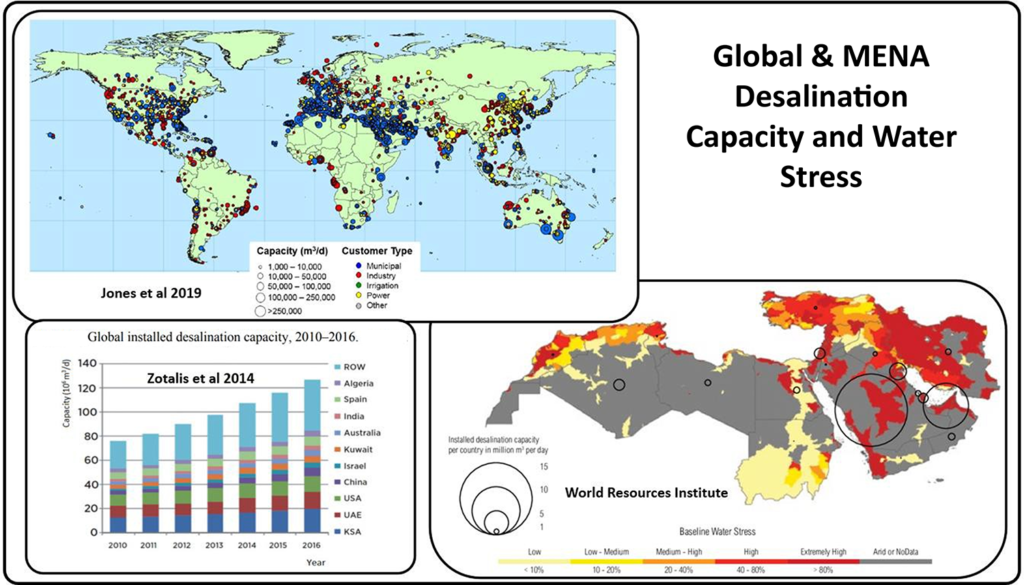

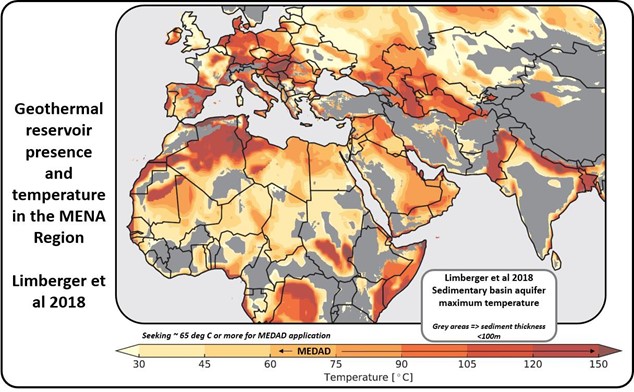
Machine Learning-Based Prediction of Rock Typing from Well Logs
Hasna Yazid (Department of Computer Science, M’Hamed Bougara University of Boumerdès [UMBB], Boumerdès, Algeria) and Said Gaci (Sonatrach–Geology, Geophysics & Reservoir Department, Algerian Petroleum Institute [IAP], Boumerdès, Algeria)

Well cores have a significant role to play in understanding the petrophysical characteristics of geological formations because they can be used to identify reservoir depth intervals with a high potential to contain hydrocarbons and presenting a suitable permeability to allow the extraction of hydrocarbons with a satisfactory flow. Due to the spatial heterogeneity of petrophysical parameters, only one core can be used per area. As a result, more cores are needed, which necessitates a higher cost.
In this study, it has been suggested to forecast lithofacies from well log data using machine learning techniques, more specifically weak learners. Applications have been conducted on well log data recorded from ten (10) boreholes drilled in different locations. The obtained results show that the considered hybrid weak learners-based approach gives a very high accuracy even when applied on a limited amount of the available data.
PANEL DISCUSSION: Evaluation & Monitoring the Environmental Impact along the Mediterranean Sea
11:00 am–12:30 pm, 01 September
Join us for a focused panel discussion on environmental aspects along the shoreline of the Mediterranean Sea, including oil spills, micro-plastics, chemical pollutants, sewage, surface and groundwater contamination, bio-monitoring, and more! More details coming soon!
Moderator:
Dr. Faraj Elmabrouk, Department of Environmental and Public Health Engineering, University of Benghazi
Co-Moderator:
Dr. Nuri Fello, Geoscience Department, Nafusah Oil Operations
Current Panelists:
Dr. Younes Ben Amer, Dean, Faculty of Science, University of Benghazi
Dr. Houssein Elbaraasi, Department of Zoology, University of Benghazi
Dr. Osama Ahmed Elsalini, Department of Zoology, University of Benghazi
Prof. Salem Elshatshat, Department of Ecology, University of Benghazi
Dr. Hussein Jenjan, Department of Zoology, University of Benghazi
Dr. Osama Rahil Shaltami, Department of Earth Science, University of Benghazi

